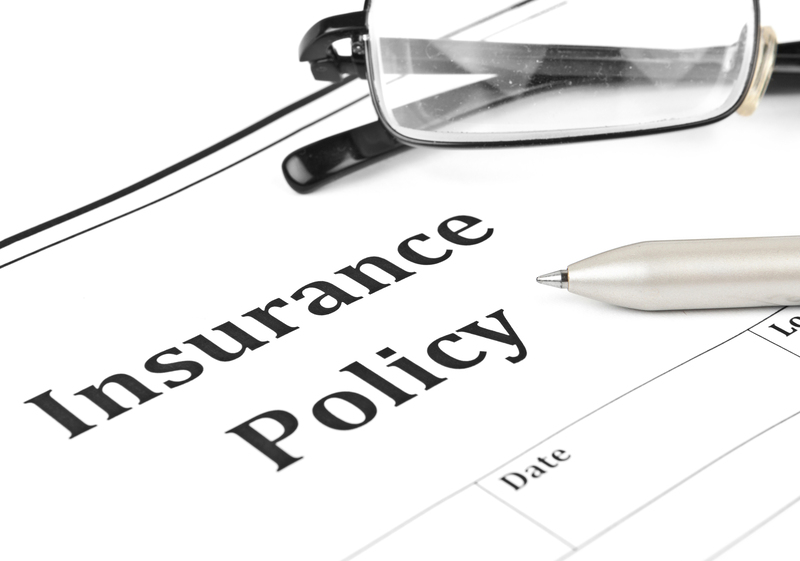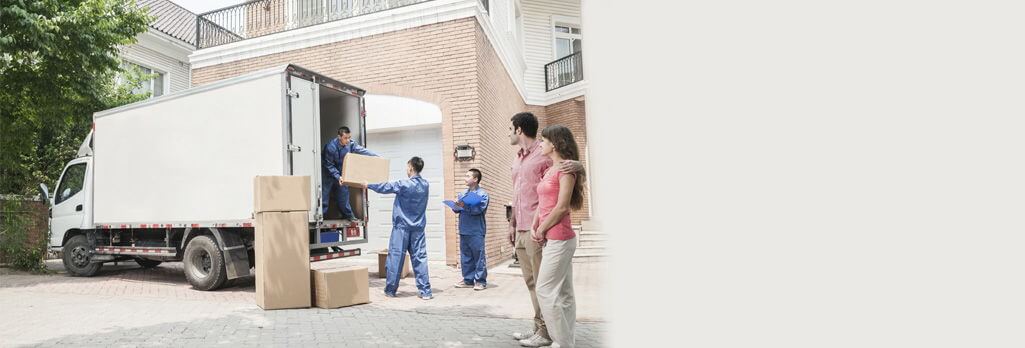Simplify Your Move with These Packing Essential Techniques
Posted on 21/05/2025
Simplify Your Move with These Packing Essential Techniques
Moving to a new home is both exciting and challenging. The prospect of a fresh start often accompanies the daunting task of packing everything you own. Whether you're relocating across town or to a new city, having the right packing essential techniques can transform your move from stressful to seamless. In this comprehensive guide, you will discover the most effective strategies and pro tips to ensure your next move is as efficient and organized as possible.

Why Packing Techniques are Crucial for a Stress-Free Move
Most moving stress originates from disorganization and last-minute rush. By leveraging tried-and-tested packing techniques, you not only save time but also protect your valuable belongings during transit. This guide will provide you with comprehensive steps, practical tips, and essential strategies to simplify packing and ensure everything arrives safely at your destination.

Table of Contents
- The Art of Planning Before You Pack
- Gathering and Choosing Your Packing Supplies
- How to Effectively Declutter: Less is More
- Room-by-Room Packing Strategies
- Creating and Using an Efficient Label System
- Smart Packing Techniques That Work
- Packing Fragile and Valuable Items
- Handling Last-Minute Packing Like a Pro
- Unpacking Strategies for a Smooth Move-In
- Printable Moving Essentials Checklist
- Final Thoughts on Simplifying Your Move
The Art of Planning Before You Pack
Packing for a move starts long before you tape up your first box. Proper planning can reduce stress, prevent overlooked tasks, and keep you on track. Here's how to start smart:
- Create a Packing Timeline: Break your tasks into weekly goals, starting at least a month in advance.
- Draft a Moving Inventory: List all the items you intend to move. This helps minimize lost items and keeps focus.
- Set a Packing Goal Each Day: Small, consistent efforts prevent the stress of last-minute packing marathons.
- Inform your household about the schedule so everyone can participate and know what to expect.
Bonus Tip:
Utilize digital tools such as moving apps or spreadsheets for optimal organization and easy tracking of your possessions.
Gathering and Choosing Your Packing Supplies
Packing essentials aren't just boxes and tape. Selecting the right supplies is integral to any packing essential technique for moving. Invest in quality materials to protect your belongings.
- Boxes: Gather sturdy boxes of varying sizes. Use smaller boxes for heavy items and larger ones for lighter items.
- Packing Tape: Choose strong, wide tape for sealing boxes securely.
- Bubble Wrap and Packing Paper: Safeguard fragile items with bubble wrap or clean packing paper. Avoid using newspaper, which can leave ink stains.
- Markers and Labels: Color-coded or pre-printed labels help pinpoint contents and destinations.
- Plastic Wrap: Use plastic wrap for keeping disassembled parts together or for spillable items.
- Furniture Covers: Protect large pieces from scratches and dust with covers or old sheets.
- Tool Kit: Keep a dedicated kit for disassembling and reassembling furniture.
Having these materials organized in advance is one of the best packing essential tips to avoid interruptions as you pack.
How to Effectively Declutter: Less is More
One of the most efficient moving tips is to declutter before packing. Why move items you no longer need?
Decluttering Techniques for Simpler Packing
- Sort as You Go: Divide items into "keep," "donate," "sell," and "discard" categories as you pack each room.
- Host a Garage Sale: Make extra cash and lighten your load by selling items you no longer require.
- Donate Responsibly: Look for local charities or shelters in need of items you can give away.
- Recycle or Dispose: Properly discard unusable or hazardous items according to your local regulations.
Decluttering now saves you time, reduces moving costs, and leads to a cleaner, clutter-free new home.
Room-by-Room Packing Strategies
Packing one room at a time enhances organization and efficiency. Here are detailed packing strategies for each area:
Kitchen Packing Essentials
- Group Items by Use: Pack everyday utensils and appliances together, and reserve a box for essentials needed up to moving day.
- Wrap Glassware Individually: Use bubble wrap or packing paper; stack plates vertically for added protection.
- Seal Open Containers: Tape or plastic wrap can prevent leaks during the move.
Bedroom Packing
- Use Wardrobe Boxes: Transport hanging clothes without folding or wrinkling.
- Protect Mattresses and Bedding: Use covers to keep bedding clean and mattresses undamaged.
- Pack Jewelry Separately: Small containers and zip bags help prevent tangles and loss.
Living Room and Electronics
- Disassemble Furniture: Remove legs and cushions; keep screws taped in clearly labeled bags.
- Protect Electronics: Use original boxes when possible, and wrap each device with protective padding.
- Photograph Setups: Take photos of cable connections for easy reassembly.
Bathroom Packing
- Minimize Liquids: Dispose of nearly empty or expired cosmetics and hygiene products.
- Seal Toiletries: Use zip-lock bags or plastic wrap to prevent spills.
- Pack a First-Night Bag: Include essentials like medication, toothbrushes, and toilet paper.
Garage, Attic, and Storage Spaces
- Group Tools and Equipment: Place sharp tools in protective cases or wrap in towels.
- Drain Fuel: Remove any gasoline from outdoor equipment before moving.
- Use Sturdy Boxes or Storage Bins: Heavy, oddly shaped items require reinforced containers.
Focusing on packing one room at a time keeps you organized and makes both loading and unloading much easier.
Creating and Using an Efficient Label System
Labeling your boxes is a simple yet essential packing technique for moving. An organized labeling system ensures you can find what you need quickly in your new home.
- Color Code by Room: Assign a different color or symbol for each room of the house.
- List Main Contents: Write a brief description on the side and top of each box.
- Fragile Alerts: Mark boxes with "Fragile" stickers or bold, underlined text as necessary.
- Number Your Boxes: This provides an easy way to inventory and track your belongings during loading and unloading.
An effective labeling system reduces confusion, saves time, and minimizes unnecessary box shuffling upon arrival.
Smart Packing Techniques That Work
Maximize space and minimize risk with these packing essential techniques:
- Heaviest Items at the Bottom: Balance boxes by placing heavier items first, then lighter items on top.
- Fill Gaps: Use clothing, towels, or packing paper to fill empty spaces, preventing movement and breakages.
- Do Not Overpack: Leave enough room so boxes aren't bulging; this prevents breakage and makes carrying safer.
- Use Suitcases: Pack books or heavy items in rolling suitcases to move them more easily.
- Keep Hardware Together: Tape screws, bolts, and assembly instructions to the relevant furniture.
- Seal All Lids: Double check and secure lids on jars, toiletries, and storage bins.
Pro Tip:
Photograph valuables, electronics, and assembled furniture for insurance purposes and easier setup in your new location.
Packing Fragile and Valuable Items
Extra caution is necessary when packing glassware, antiques, and electronics. Here's how to ensure their safety:
- Double-Box Technique: Place fragile items in a smaller box with padding, then place that box inside a larger one filled with cushioning materials.
- Bubble Wrap Generously: Layer each fragile piece with bubble wrap and use packing peanuts to fill spaces.
- Secure With Tape: Ensure all sides of boxes are taped and reinforce the bottom for extra strength.
- Label Clearly: Mark "Fragile" in large, bold, and underlined text. Mention "This Side Up" where applicable.
Pack valuable items yourself and transport them separately if possible, for your peace of mind.
Handling Last-Minute Packing Like a Pro
Sometimes time slips away, and packing must be done quickly. These essential moving and packing tips can help:
- Start with Priorities: Focus on the most important and necessary items first.
- Use Pre-Labeled Bags: Group similar small items in zip bags for quick packing.
- Enlist Help: Ask friends or hire professionals for last-minute tasks.
- Skip Sorting for Now: Place miscellaneous items in 'misc' boxes to handle after the move.
- Don't Forget Essentials: Set aside vital items (medications, paperwork, chargers) in a carry-on bag.
Unpacking Strategies for a Smooth Move-In
Packing efficiently makes unpacking far easier. Implement these techniques to settle into your new home effortlessly:
- Unload Boxes by Room: Place each labeled box in its designated room immediately upon arrival.
- Unpack Essentials First: Start with kitchen, bathroom, and bedroom essentials for daily living.
- Setup Furniture First: Arrange major pieces to clear floor space for unpacking boxes.
- Follow Your Inventory: Cross-check your packing list to ensure every box and item has arrived safely.
Take time to declutter as you unpack; not everything packed must find space in your new home.
Printable Moving Essentials Checklist
Use this checklist to guarantee you cover all packing essentials for moving:
- Boxes (small, medium, large, specialty)
- Packing tape and dispenser
- Bubble wrap and/or packing paper
- Plastic wrap and zip bags
- Permanent markers and colored labels
- Scissors and box cutters
- Furniture blankets and covers
- Tool kit for disassembly/reassembly
- First aid kit
- Personal bag with essentials for moving day (snacks, water, documents, phone charger, cleaning supplies)
Download and print this moving checklist to ensure you don't overlook any packing necessities as you move forward.
Final Thoughts on Simplifying Your Move
Relocating does not have to be overwhelming. With the right mix of packing essential techniques, organization, and strategic planning, you can achieve a smooth, stress-free move. Start early, edit your possessions ruthlessly, and stick to a systematic packing and labeling routine. The effort you invest now will pay off with a seamless transition into your new home.
Remember: Proper packing is the cornerstone of an easy move. Take these valuable packing tips and moving essentials to heart for a simplified, enjoyable relocation experience.
Happy moving!









